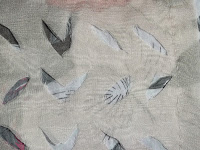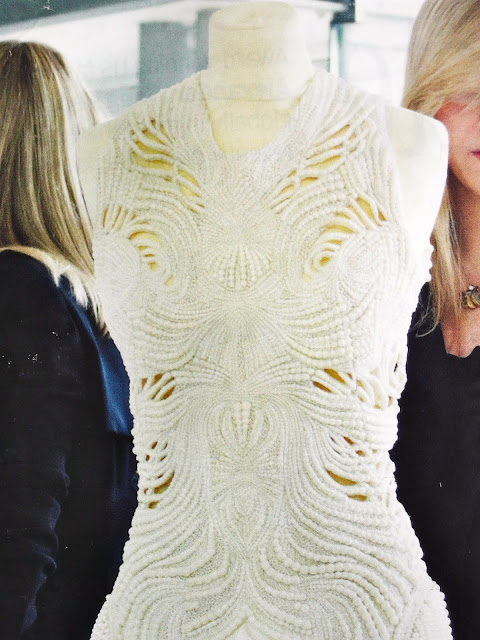Stage 1 Reviewing my work so far
Colour:
Looking at the exercises and samples I have done for this course I am reminded of all the things I enjoyed exploring and wanted to do more of.
These two are from the colour section, and remind me that I didn't have time to do as much exploration of how adjacent colours influence each other as I wanted to at the time.
I have been thinking, while exploring colours in my sketchbook, and my theme, that in natural things there is almost always an unexpected colour or two in the mix, and that this gives things a richness and interest that they don't have when I just use the 'harmonious' colours.
Also the idea that colours can be mixed on the fabric as well as in the palette.
Seeing this sampler again after so many months reminded of me of the pleasure I got from embroidering it in a tent during a 3 day rainstorm. It was just about the only thing that could have stopped me minding the wet.
The cicada's wings have veins on them which are in an attractive pattern, and parallel (or roughly parallel) embroidered lines could be useful for this.
I became particularly interested in the attractive qualities, and the technical difficulties, of embroidering a pattern onto translucent fabrics. This may well be something I could benefit from exploring more for this project.
It may be possible to use this to represent sound waves.
This square of a sampler was made using upholstery twine, and the hard dryness of the result appeals to me still. Again, this could be adapted to reflect qualities of the exosketelon of cicadas, especially over their legs I think.
Painting and Printing:
Looking at the painting and printing exercises and samples, I think I could use them to explore images and patterns in my sketchbook, and use the techniques to add interest or colour to fabric, but I am not sure if there's any particular technique that I have an urge to do more of for its own sake at the moment.
Except the linocut which I loved doing and loved the detailed result.
Fabric Manipulation
The fabric manipulation exercises were full of things I wanted to try more of. This one - pin tucks in more than one direction - made me think of insect wings at the time, and can be used to make a variety of different shapes between the tucks. It has something of the curved quality of joins between bubbles which I noticed in the wings of the cicada.
I'm not sure whether this one can be useful for developing this piece, but the lumpy, irregular quality of it really appealed to me at the time, and made me want to try variations of it with different fabrics.
These sewn pleats use the striped pattern of the fabric to create a different pattern, not unlike the pattern on the abdomen of the cicada.
When I made this stuffed applique folded square, I thought it looked like a cricket.
Stuffing shapes could be useful as a technique for making insect body shapes. (Although it is not a technique that I find particularly inspiring).
These swags are something I drew in my sketchbook during the fabric manipulation section of the course, and I still want to develop them further.
 |
| These little pleats are very appealing, and the cut outs on the skirt interesting - worth another explore I think. |
Applique and fabric alteration:
I did want to do more of was this layer and cut idea. It could be used for shading a pattern, or adding an interesting texture. Since translucent fabrics are often shiny to some extent, this could be used for the insect to give some of that shininess which characterises them.
I am wondering also about weaving threads within the structure of a loose fabric to represent the sound waves.
The way stitching makes shadows has always appealed and intrigued me. I am already looking forward to a session trying this as a way to represent images and feelings associated with cicadas and the sound they make.
White seems to give the most effective contrast between the fabric and the shadow, but perhaps there is some other way to get a similar or waay different effect? Worth a look.
Making textile structures:
Most of my textile structures images and samplers are with my tutor for assignment 4.
 |
| This S/S 2013 collection Balmain jacket is woven from strips of white in the same pattern as a cane chair. It makes me want to try more and different woven patterns, to see what happens. |
OK, way too many options!


















No comments:
Post a Comment